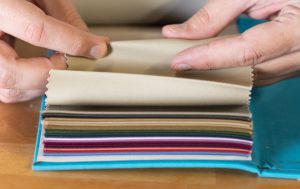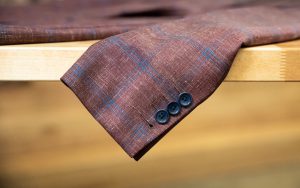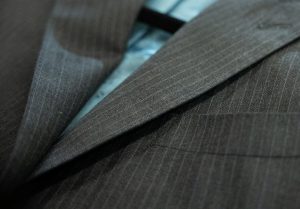Understanding Suit Fabric Prices: The 5 Key Factors That Influence Cost
Understanding Suit Fabric Prices: The 5 Key Factors That Influence Cost
Introduction
Choosing the right fabric for your suit is one of the most important decisions you can make when it comes to your wardrobe. The price of suit fabric can vary widely, and understanding the factors that contribute to these differences is crucial for making an informed decision. In this post, we will explore the top five factors that determine the price of suit fabric, giving you the insights needed to select the best fabric for your needs.
Ultimately, the 5 key factors that contribute to suit fabric price are raw materials, the milling process, dyeing & finishing, drape, and luster.
Suit Fabric Price Factor 1: Raw Materials

Sheep are most commonly used for suiting wools, but raw materials can be sourced from hundreds of natural fibers like goat hair, linen, hemp, cotton, camel, and more.
One of the primary factors influencing the price of suit fabric is the raw materials used in its production. High-quality fabrics are typically made from superior raw materials such as fine wool, cashmere, or silk. For instance, top-tier wool sourced from Australia is considered among the highest grades available and thus commands a premium price. Many of our suits from Reda and Vitale Barberis Canonico will use Australian wool in their suiting fabrics. In contrast, fabrics made from synthetic materials like polyester or viscose blends are generally less expensive due to the lower cost of raw materials and their inferior quality.
It’s worth mentioning that while this article focuses mostly on wool, linen suits and suits blended with varying amounts of silk, cotton, spandex, and even bamboo can vary widely in quality and price.
Key Takeaway: Higher-grade raw materials, such as premium wool, significantly increase the cost of suit fabric.
Suit Fabric Price Factor 2: Milling Process
The milling process is intricate and involves several stages, each contributing to the fabric’s final quality and price. Premium fabrics undergo meticulous milling, ensuring that every step, from spinning the yarn to finishing the fabric, is performed with the utmost precision. This attention to detail reduces imperfections and enhances the fabric’s quality, resulting in a smoother texture, better drape, and a refined appearance. On the other hand, cheaper fabrics often cut corners during the milling process, leading to visible flaws and a less desirable finish.
Key Takeaway: The thoroughness and precision of the milling process directly impact the fabric’s cost and quality.
Suit Fabric Price Factor 3: Dyeing and Finishing

Mills will often create an undyed batch of wool, called a bolt, then dye it into hundreds of different colors.
The dyeing and finishing processes are crucial in determining both the aesthetic appeal and durability of the fabric. High-quality fabrics are dyed with premium dyes that provide a rich, consistent color and are resistant to fading. The finishing process, which might include treatments to enhance wrinkle resistance or to add a luxurious sheen, also adds to the fabric’s price. Fabrics that undergo extensive finishing are often smoother, have a better drape, and are more comfortable to wear.
Key Takeaway: Premium dyeing and finishing techniques add to the cost but result in superior color and texture.
Suit Fabric Price Factor 4: Fabric Drape

How a suit fabric drapes or falls on the wearer is vastly different at higher suit fabric prices. Elegance comes at a cost!
The way a fabric drapes over the body is another significant factor that influences its price. High-quality fabrics have a natural drape that follows the contours of the body, creating a more elegant and flattering appearance. In contrast, lower-quality fabrics often have a stiffer drape that does not conform as well to the body, leading to a less tailored look. The better the fabric drapes, the more expensive it is likely to be.
Key Takeaway: Fabrics with a superior drape offer a more polished look and come at a higher cost.
Suit Fabric Price Factor 5: Fabric Luster

Luster is a critical component of high quality suits and, in effect, suit fabric price.
Luster, or the way a fabric reflects light, is a visible indicator of quality. High-end fabrics often have a subtle sheen that adds to their visual appeal, without being overly shiny. This soft luster is a hallmark of well-milled wool and other premium materials. In contrast, lower-quality fabrics may either lack luster entirely or have an uneven, unattractive shine. This is often due to inconsistencies in the milling process or the use of lower-grade materials.
Key Takeaway: A fabric’s luster is a key visual cue of its quality, with higher luster indicating a more expensive and refined fabric.
Conclusion
Understanding the factors that influence the price of suit fabric can help you make a more informed decision when selecting materials for your next suit. The quality of raw materials, the intricacy of the milling process, dyeing and finishing techniques, the fabric’s drape, and its luster all play vital roles in determining both the cost and the overall quality of the fabric. While high-quality fabrics come at a premium, their superior appearance, feel, and durability often make them worth the investment.
Final Note: If you have any further questions about fabric quality or need guidance on choosing the right fabric for your suit, feel free to reach out to us. We’re here to help you find the perfect fabric for your style and budget.
Like What You See? There's More.
We'll send you style advice and intel for the modern man.
2 thoughts on “Understanding Suit Fabric Prices: The 5 Key Factors That Influence Cost”
-
Pingback: Durable Suits: A Buy-It-For-Life Guide | Black Lapel
-
Pingback: What does a Suit Super Number mean? Explaining this tricky trait.
